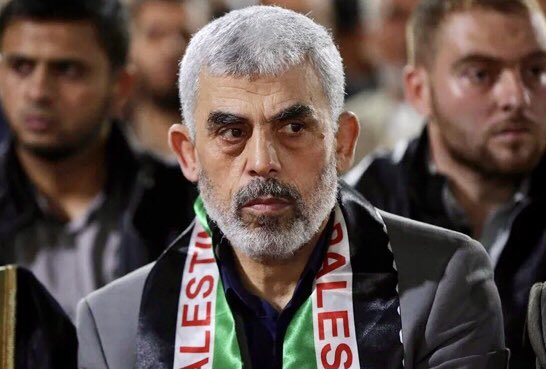BESA Center Perspectives Paper No. 2,049, May 25, 2021
EXECUTIVE SUMMARY: Gaza residents refused to join Yahya Sinwar in celebrating Hamas’s “victory” in the recent clash with Israel: first, because they do not like being the human shields from behind whom Hamas launches its missiles; and second, because they are tired of being the only Palestinians to suffer 95% of the brunt of fighting that gets them no closer to “liberating” Jerusalem.
Never has Hamas faced a victory as shallow as the latest round of fighting it initiated with Israel, the evidence of which Hamas itself produced.
On the day after the ceasefire, Hamas internet sites showed a four-minute video of Yahya Sinwar, the Hamas leader of Gaza, appearing in public for the first time since the fighting had begun 12 days before. He is shown walking, accompanied by Hamas stalwarts, to victorious music amid festive banners. Loudspeakers blare his presence and the Hamas victory, and invite the public to join the festivities. The authorities had made sure to close the avenue in one direction and leave the other direction open. The traffic control, loudspeakers, and banners indicated that the event had been meticulously planned.
But it failed to materialize. No member of the public—not a single one— joined in. In the background, cars can be seen driving through and pedestrians walking about without anyone bothering to turn their gaze toward the event.
True, Sinwar is a lousy speaker, an obviously shy terrorist who loathes the limelight. In this he contrasts to Ismail Haniya, a more loquacious and charismatic figure, who preferred to spend the past year and a half in the opulence first of Istanbul and then of Doha, the capital of Qatar. But Sinwar’s lack of oratory skills doesn’t explain why Hamas could not pull off a victory celebration even one-tenth the size of celebrations in Hebron or Berlin, though those too were hardly massive.
There are two basic reasons why Hamas is in total disconnect with its Gaza constituency (excepting the 50,000 families who form the hard core of Hamas and are in its employ as a result of Qatari largesse).
First, Gaza’s residents know that Hamas deliberately operates from within the dense neighborhoods in which they live. Though the civilian population is rarely directly hit by the Israeli army, which does everything possible to prevent collateral civilian damage, the psychological toll of being used as a human shield is nevertheless considerable. Israel’s 6,500 strikes mostly involved missiles with a 500 to 750 kilo payload. Israelis now know that Hamas missiles with a payload one-twentieth of that have a nerve-racking impact that can be heard and felt over an area of four to five kilometers (16 to 24 square kilometers). A rocket strike from an Israeli plane with a payload 20 times that amount has a much greater impact, which means half of Gaza’s residents are affected by every strike. Those residents endured that effect 300 times over 12 days, 25 times a day—a level of punishment perhaps only fully understood by Israelis in the “Gaza envelope.”
Even worse is the feeling that for the past 17 years, Gaza’s residents have borne the brunt of repeated rounds of fighting alone. Whereas in the rounds of massive violence that occurred in 1987 and 2000, the burden was equally shared with Palestinians in Jenin, Nablus, Jerusalem, and Hebron, in the past 17 years (during which time terrorism in those places sharply declined) the residents of Gaza suffered over 95% of the psychological and material burden and loss of life of “liberating” Palestine.
It is true that a small percentage of Israeli Arabs rioted in the first days of the confrontation, there was one day of (partial) rage in the PA, and plenty of hollow words of support were uttered across the Arab and Islamic worlds. This all translates into a small fraction of what Gaza residents went through in this fourth round of Hamas-Israel fighting.
And what did they get in return? Seven Israeli Jews dead, a Muslim Palestinian father and daughter killed by an undiscriminating Hamas missile just outside Lod, three dead foreign workers, three dozen or so destroyed apartments, and tens of scorched cars—hardly the kind of results that will prevent a next round from taking place, let alone that will get any Gaza resident a step closer to “liberating al-Quds.”
Gaza residents live in a totalitarian state controlled by ruthless Islamists. They have only one way to protest their plight, for which they are more than partially to blame. In the 2006 elections, they overwhelmingly voted for Hamas. In May 2021, they have little other option but to “walk on by” as Sinwar and his cronies, as well as the fake news- makers at Aljazeera and their imitators in the European press, proclaim Hamas’s alleged victory.
This was no victory—a fact Gaza’s residents know well but cannot divulge.
Prof. Hillel Frisch is a professor of political studies and Middle East studies at Bar-Ilan University and a senior research associate at the Begin-Sadat Center for Strategic Studies.


